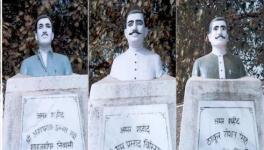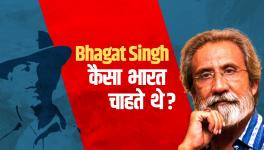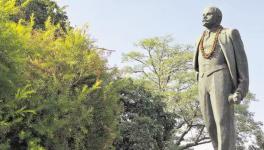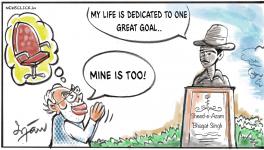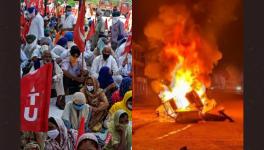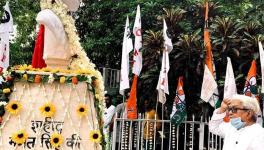Bhagat Singh and the Assembly Bombing of 1929
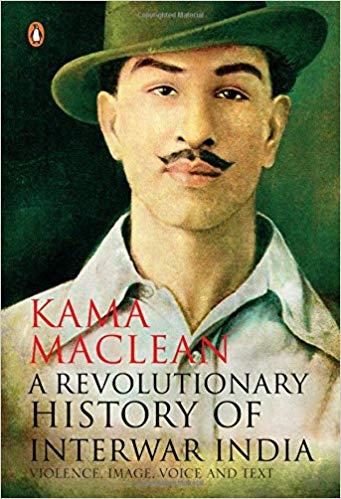
Image courtesy: Amazon
When, after the Chauri Chaura incident in 1922, Mohandas K. Gandhi suspended the non-cooperation movement, the Indian National Congress was divided into two groups — the liberal group formed a new Swaraj Party under the joint leadership of Moti Lal Nehru and Chittranjan Das, and the youth group formed a revolutionary party called the Hindustan Republican Association (HRA) under the leadership of Ram Prasad Bismil. In 1928, responding to the rise in anti-colonial sentiment, the HRA became the Hindustan Socialist Republican Army (HSRA), due to the influence of Bhagat Singh, Chandrasekhar Azad, Sukhdev Thapar and others.
Drawing on a range of evidence, including recently declassified government files, memoirs and interviews with former revolutionaries, and by analysing photography and visual culture of the period, Kama Maclean's A Revolutionary History of Interwar India: Violence, Image, Voice and Text, foregrounds the complex engagements and relationships between the Hindustan Socialist Republican Army (HSRA) and members of the Indian National Congress in the interwar period.
The following is an excerpt from the chapter 'Gandhi and Balraj: From Dominion Status to Complete Independence' of the book.
A number of nationalist leaders condemned the attack on the Assembly, as the government expected them to. Gandhi decried that ‘the bomb throwers have discredited the cause of freedom in whose name they threw the bombs.’ Motilal chose a different path. Two days after, the Congress president delivered a speech in which he reflected on the significance of the attack:
It is wise statesmanship alone which can, by strengthening the forces of non-violence, meet the forces of violence. To say that ‘This is a sad day for the future of India’ or that ‘Such an incident is a catastrophe to India’ will do no good. … The real India does not believe in the cult of the bomb, nor does she believe in the cult of the Statutory Commission. India believes in suffering, and if the Government does not weaken the hands of Mahatma Gandhi she will one day stagger the world by the magnitude of her suffering for freedom. Let the people and the Government see things in their true perspective. The choice lies between Gandhi and ‘Balraj’.
By inviting the British to make a choice between Gandhi or ‘Balraj’ (the signatory to the leaflets that Bhagat Singh and Dutt had rained on the Assembly after the bombs), Motilal sparked a controversy, prompting a stern intervention from the Viceroy. In a speech addressed to the Assembly, Irwin animatedly criticised Motilal’s failure to condemn the bombing outright. The next day Jawaharlal entered the fray, defending his father’s interpretation in an address in Allahabad, delivering a sharp retort:
While many of us may grieve over the incident, for reasons that the Viceroy may not appreciate, it is absurd to talk of unqualified condemnation of the young men who did it. …Lord Irwin has told us of the naked conflict between two contradictory philosophies, that of physical violence and that of reason and argument. On which, may I ask, do Lord Irwin and his Government base their rule in India? Is the foreign Army of Occupation here to reason with us sweetly? Are the mercenary Indian armies the embodiment of persuasion, and the police and the shooting and the brutal assaults and vindictive legal processes? Were the lathi blows that fell on Lala Lajpat Rai an attempt to reason with him?
Scotland Yard described this intervention as ‘very objectionable’. It would have objected even more, had it known that there was an important prequel to the attack on the Assembly.
In early March 1929, Bhagat Singh approached Kumari Lajjawati, a worker from the Punjabi Congress who was sympathetic to the Naujawan Bharat Sabha, complaining to her that ‘your Congress leaders call us dacoits whenever we do anything’.7 Bhagat Singh suggested that in doing so, the leaders were missing out on an opportunity to leverage the revolutionaries’ actions against the government, to meet the ends of the Congress. Shortly after this exchange, Sukhdev visited Lajjawati to request that she liaise with the senior Congress leadership, specifically suggesting Motilal Nehru (with whom she was close, through the Zutshi-Sahgal family), inviting him to capitalise on the threat of violence posed by the revolutionaries when negotiating with the British. This was confirmed by Lala Feroze Chand, the Lahore-based member of the Congress and editor of Bande Mataram, who enjoyed close working relationships with both Sukhdev and Bhagat Singh:
[Bhagat Singh] professed very advanced views, there is no doubt, and he criticised Congress programmes as much too mild; but he was willing to concede that both things were necessary. He was not like some other revolutionaries, altogether hostile to the sort of programmes that the Congress and other nonviolent leaders were placing before the country. He had this conveyed, I understand, to Pandit Motilal Nehru, and Pandit Moti Lal Nehru, in a speech that became famous at the time, had used this expression: ‘The choice for the British is “Balraj” or Gandhi.’ ‘Balraj’ was Bhagat Singh’’s coinage for ‘force’. And this expression ‘Balraj or Gandhi’, this also I ascribe to Bhagat Singh, although Motilal Nehru made it current. He thought it would strengthen the hands of the Swarajists’ work or Pandit Motilal’s work, if ‘Balraj’ also asserted itself to some extent if it could be made clear to the British that if they did not concede the demands put forward by Gandhi, Lajpat Rai, Motilal, then they would have to reckon with ‘Baljraj’, because the nation had no other alternative. The British must either concede the demands or the nation must rise in violent rebellion against the British and fight for its freedom. Such was Bhagat Singh’s thinking.
Interestingly, in 1933, with the revolutionaries in north India largely suppressed, a report on Terrorism in India drew much the same conclusion, reasoning that managing ‘the violence movement’ depended on ‘the extent to which coming constitutional changes satisfy reasonable political aspirations. If an impression is created that political progress cannot be obtained by constitutional methods or without resort to violence, conditions favourable to increased revolutionary activity … will come into existence’. But in 1929, as the reverberations of the Assembly Outrage rattled throughout the empire, such a concession was unthinkable.
A year later, Motilal’s ‘Balraj or Gandhi’ speech was still the topic of discussion in the Intelligence Bureau, ranked as the most significant of all ‘public utterances by Congress leaders’, that ‘foster and stimulate the spirit of violence’. The nationalists press had defend Motilal’s statement, explaining that the Pandit was unequivocally in favour of non-violence; that in making this speech, he merely sought to emphasise that ‘the best way to relegate “Balraj” to the background is to bring Gandhiji into prominence and to strengthen his hands’.
Motilal Nehru’s involvement with the Assembly Bomb Case (prosecuted in Delhi, before Bhagat Singh and B.K. Dutt were moved to Lahore to face charges in the larger Lahore Conspiracy Case in June) did not end with this incident. He covertly made some significant legal interventions as well. From early newspaper reports covering the police investigation of the bombing, it is clear that the original defence proffered by Bhagat Singh and Dutt’s lawyer, Asaf Ali, was that the attack was ‘a mere school boy’s joke’. This was entirely counter to the HSRA plan, which was to flagrantly admit guilt and use the courtroom as a venue for expressing their ideology. Chaman Lal said that Asaf Ali’s first defence statement ‘was torn to pieces by Bhagat Singh, I remember that definitely.’ He then added; ‘Pandit Motilal Nehru had helped to write the statement that Bhagat Singh actually made’.
This has been attested to by J.N.Sahni, Chaman Lal’s editor, who further elaborated that Bhagat Singh’s father had come to Delhi to help organise his son’s defence, and had brought the statement to him for advice: ‘After incorporating the essence of their views, I rewrote the statement and confidentially took it to Motilal. He not only kept most of what the boys wanted intact, but made the language even more aggressive.’ Crucially, Motilal brought his legal nous to the document by reinserting a sentence from the leaflet signed by ‘Balraj’, stressing that their intent had not been to kill, but ‘to make a loud noise’ (a reference to the French anarchist, August Valliant). This, Sahni believed, saved Bhagat Singh and Dutt from a death sentence for attempted murder in the Assembly Bomb Case. Perhaps this anecdote explains the background to a letter Jawaharlal wrote to Gandhi, shortly after the stir created when the statement was read in court, in which Jawaharlal expressed his confidence that Asaf Ali had not been the author of the statement: ‘I think you are mistaken in thinking that the statement was the work of their counsel. My information is that counsel had nothing, or practically nothing, to do with it. He might have touched up the punctuation. I think the statement was undoubtedly a genuine thing’.
Get the latest reports & analysis with people's perspective on Protests, movements & deep analytical videos, discussions of the current affairs in your Telegram app. Subscribe to NewsClick's Telegram channel & get Real-Time updates on stories, as they get published on our website.









